Image
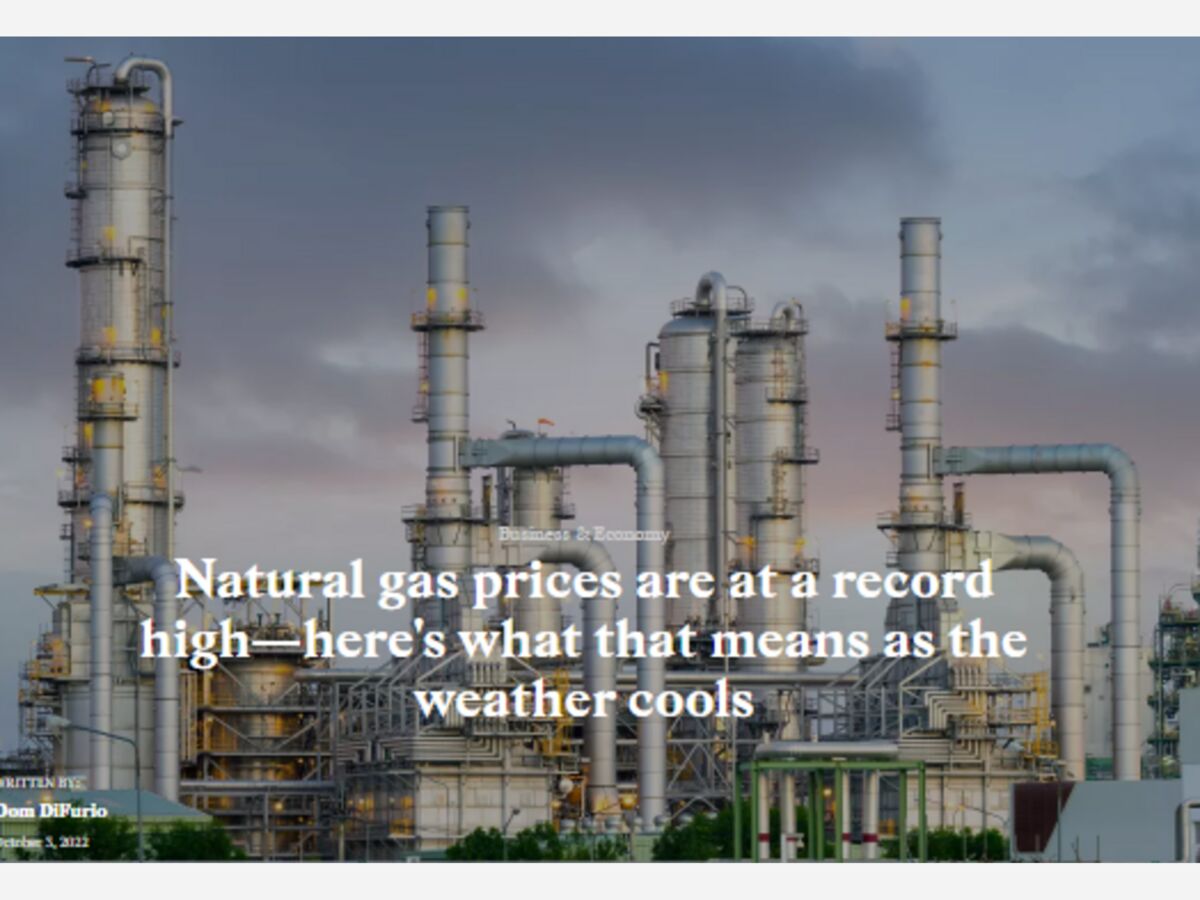
Written by: Dom DiFurio
Winter is coming—and so are higher energy bills for American consumers, thanks to a global shortage of natural gas and ongoing conflict in Eastern Europe.
President Vladimir Putin of Russia has cut off multiple NATO countries' access to his country's oil and gas production in recent weeks, worsening already skyrocketing utility bills for small and large businesses throughout Germany and other leading European economies. The shut-off drew condemnation from trans-Atlantic leaders, who said Putin is weaponizing Russia's massive natural resources. Moscow has moved to shut down the Nord Stream 1 gas piped under the Baltic Sea to Europe, while redirecting more oil and gas to neutral or friendly countries in Asia, such as India and China. The Russian redirection of energy to China comes in response to Western economic sanctions. It is also a way for the Kremlin to retaliate for billions of dollars in U.S. and NATO military equipment provided to Ukraine six months into the Russian invasion.
Some forecasts estimate Europeans will see a more than threefold increase in energy bills this winter, including natural gas and electricity, compared with the winter of 2021. At the start of September, U.S. natural gas futures markets were trading up 95% year over year, suggesting consumers could pay double what they forked out just a year ago for their residential gas bills.
Stacker examined residential natural gas price and consumption data from the U.S. Energy Department's Energy Information Administration to see how U.S. prices have changed and which states have been most affected.
Natural gas is a fossil fuel made up mostly of methane and is considered a lower-emissions alternative to oil. We use natural gas to generate electricity, heat homes, and fuel stoves. But the fuel is in short supply worldwide, not only driving up costs in Europe but creating a multinational emergency.
Those supply issues have had repercussions (though less significant ones so far) in the U.S. According to the U.S. Department of Energy, natural gas accounts for about 30% of all energy consumption in the country, including serving as a baseload for renewables, such as West Texas's large wind farms. The U.S. doubled the amount of natural gas it exports to Europe over the last year. Gas is shipped across the Atlantic Ocean and other sea routes after being cooled to ultra-low temperatures, then compressed into tankers at liquefied natural gas terminals.
There are currently a dozen operating liquefied natural gas terminals in the eastern U.S., with most concentrated on the Gulf of Mexico. Canada has one active liquefied natural gas terminal that can ship to Europe. The rise of liquefied natural gas over the last two decades has created, for the first time, a global marketplace for gas, linking hitherto separate North American, Asian, and European Union energy markets. That's partly why sky-high prices in Europe are driving up natural gas prices here in the U.S.
So far this year, the average price of residential natural gas nationally is $15.19 per thousand cubic feet. That's the highest price since the U.S. Energy Information Administration began collecting data. The federal agency forecasts U.S. natural gas consumption for 2022 will set a new record. Residents in Hawaii, Georgia, Florida, and the Carolinas have paid the highest prices for natural gas so far this year.
Analysts at Goldman Sachs Research warned in an early September 2022 memo that "the market continues to underestimate the depth, breadth, and structural repercussions of the [energy affordability] crisis." Researchers said conditions could grow to be even direr than the oil crisis experienced in the 1970s, when an oil embargo enacted by Mideast oil producers drove down supplies and drove up prices.
Liza Tucker, a consumer advocate with the nonpartisan public interest group Consumer Watchdog, urged consumers to prepare to conserve energy. In states with a deregulated energy market, such as Texas, Tucker recommends shopping around for the best rates. Many energy providers and state governments offer rebates and incentives, and Tucker advises taking advantage of as many as possible. Since the start of the COVID-19 pandemic, several states have also set up utility bill assistance programs for low-income consumers.
Where it's financially advantageous, consumers can also consider upgrading to more efficient heating, ventilation, and air conditioning systems, or installing solar panels to reduce overall energy costs. Lower cost conservation options include installing new weather stripping and adding insulation to your home—especially in older ones.
Changing behaviors, Tucker told Stacker, can also affect usage. "Play with the thermostat and see at what point your body really feels too cold. If you've got a new energy-efficient dishwasher, don't run it half-full and think you are saving energy," she said. "Run it full."
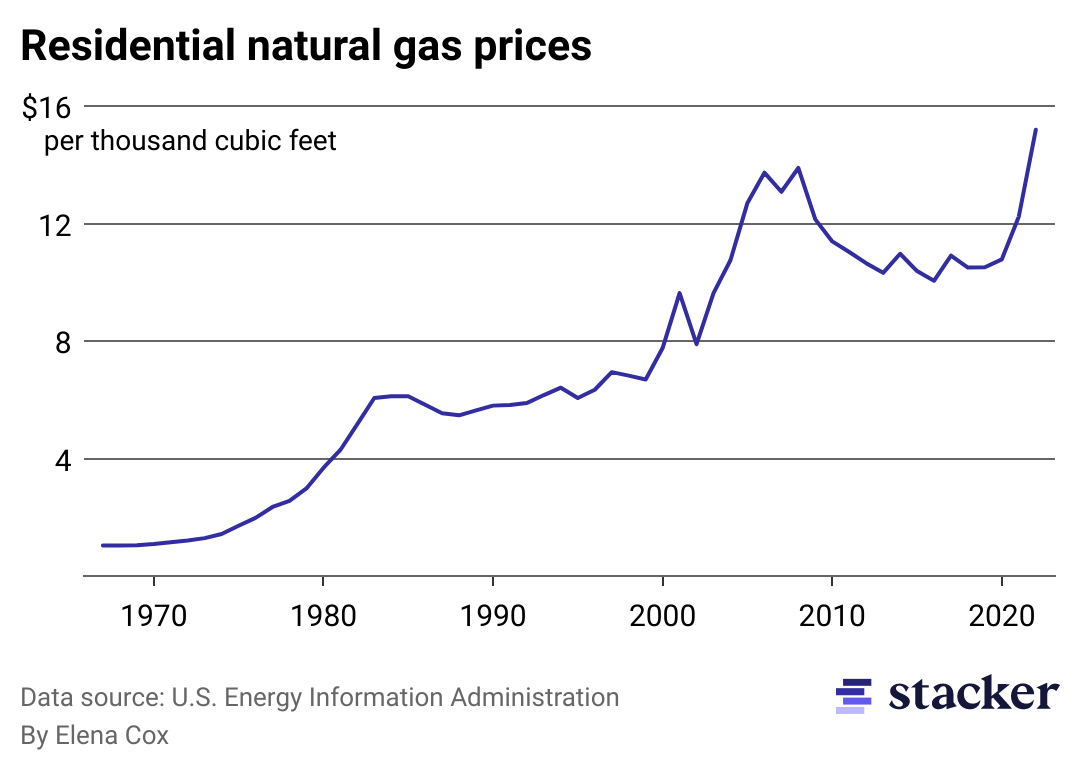
Roughly half of all American households heat their homes with natural gas, according to the National Energy Assistance Directors Association. NEADA forecasts that those Americans reliant on natural gas for heat will pay nearly 34% more than last year to keep their homes warm this winter.
Natural gas prices have set new records this year, climbing past the highs seen during the 2008-2009 recession. The price of natural gas doubled in the first six months of 2022, jumping from $12.04 per thousand cubic feet to $22.73.
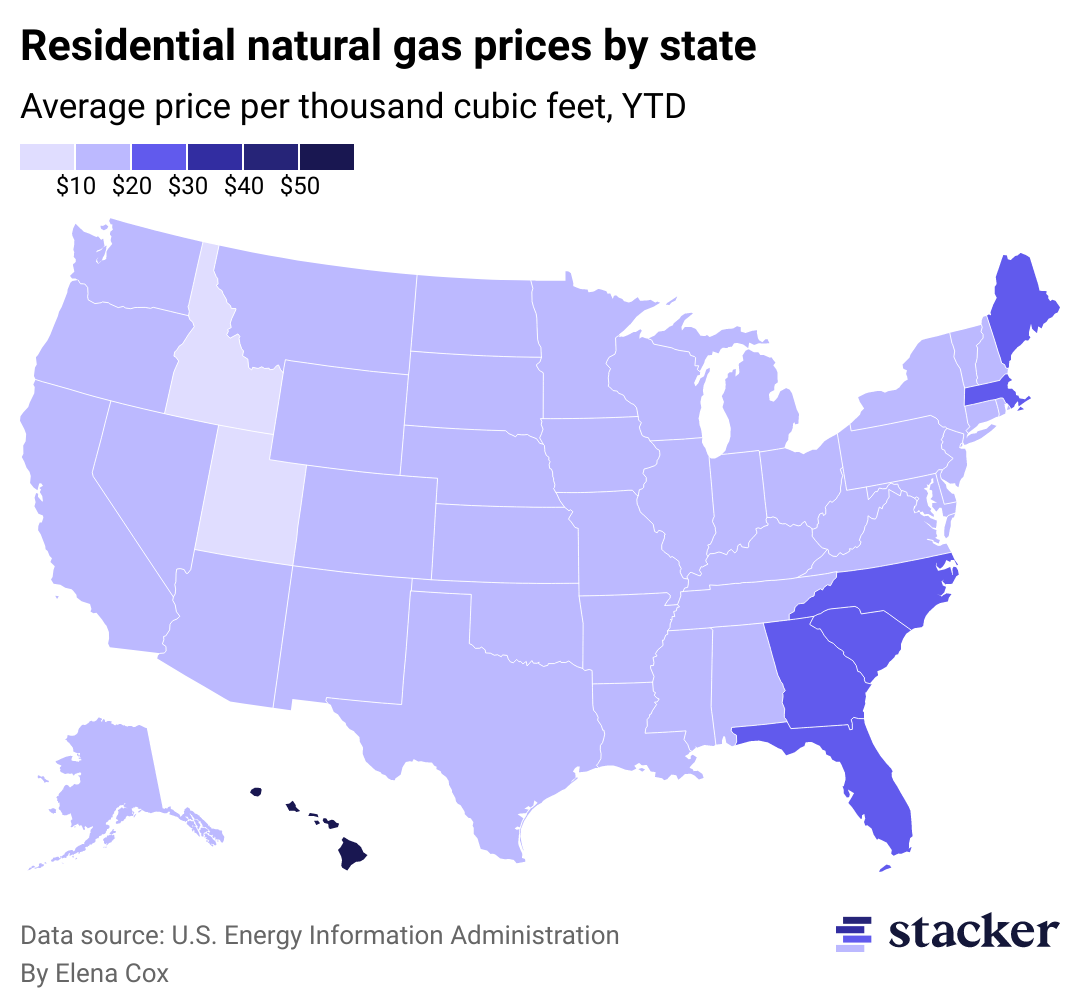
The biggest consumers of natural gas are states in the Midwest, including Michigan, Illinois, and Ohio, as well as those across the western U.S. that experience colder temperatures, such as the Rocky Mountain states of Wyoming and Colorado. New York residents also used a large amount of natural gas last year compared with their northeastern neighbors in New England. New York homes use more natural gas for heating than the average for the U.S., according to the EIA.
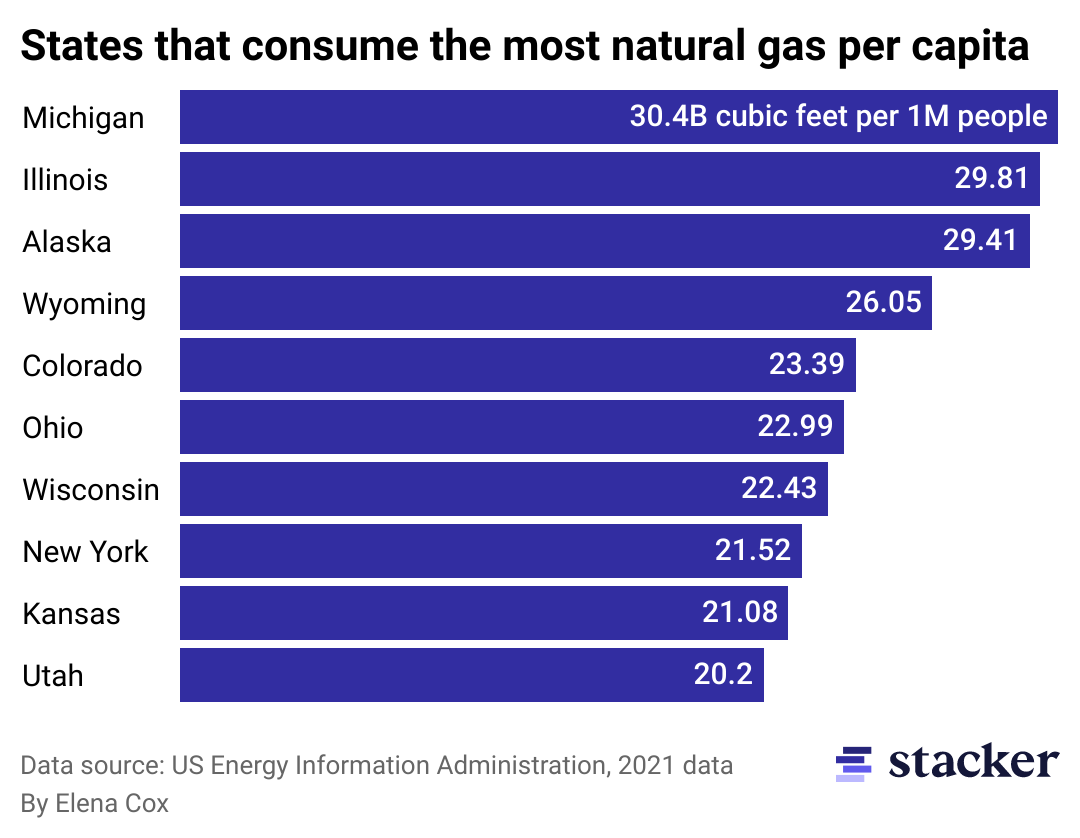
States that consume the most natural gas tend to be those in the Midwestern states. The most expensive natural gas prices this year, however, were not found in the Midwest, but in Hawaii, Florida, Georgia, South Carolina, North Carolina, Massachusetts, and Maine.
High demand for air conditioning during the summer heat wave has already exacerbated the pain of higher natural gas prices in the Southern U.S., pushing energy bills to unsustainable levels for some consumers. And small business owners in South Carolina have said they're changing the way they operate, due to the higher costs of keeping restaurants and storefronts cooled.
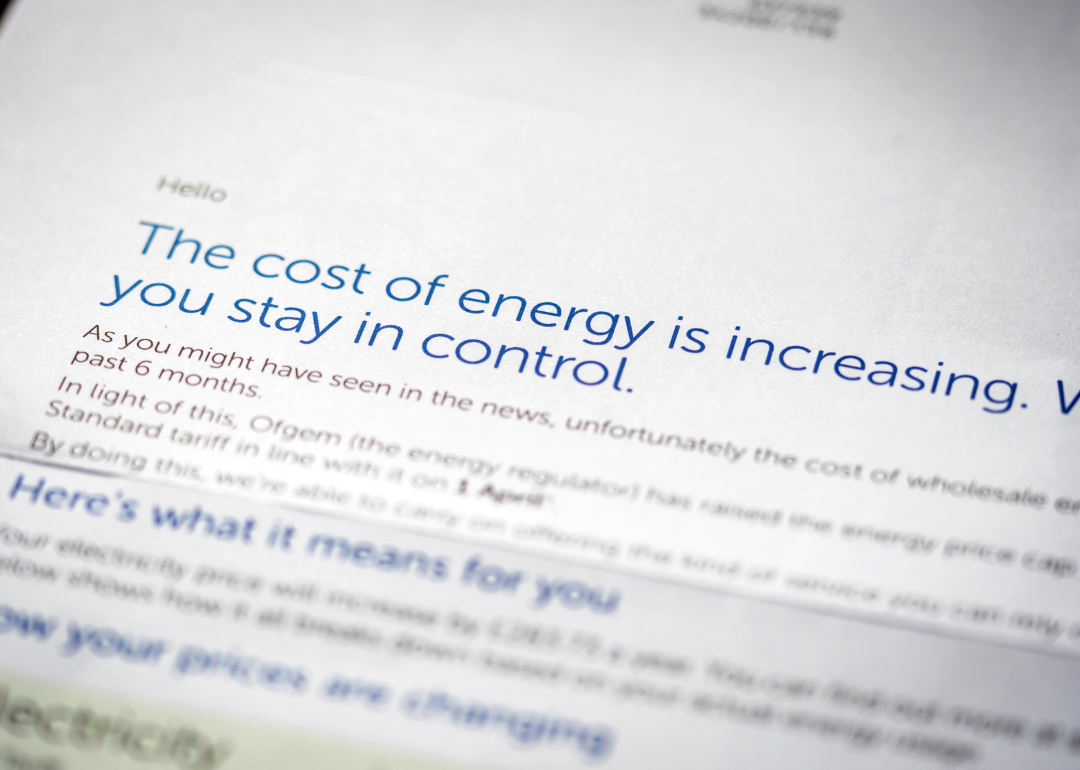
The rising cost of everything from groceries to housing, car rentals, and gasoline has pinched Americans' wallets over the last year. And while prices at the gas pump are coming down from highs seen in the spring, costly energy bills have kept the pressure on consumers this summer, as Southern states have experienced heat waves and drought.
Higher prices for energy this winter—along with higher food and shelter costs—could keep inflation elevated. Despite efforts by the Federal Reserve to bring inflation under control, inflation dipped from 8.5% in July to 8.3% in August.